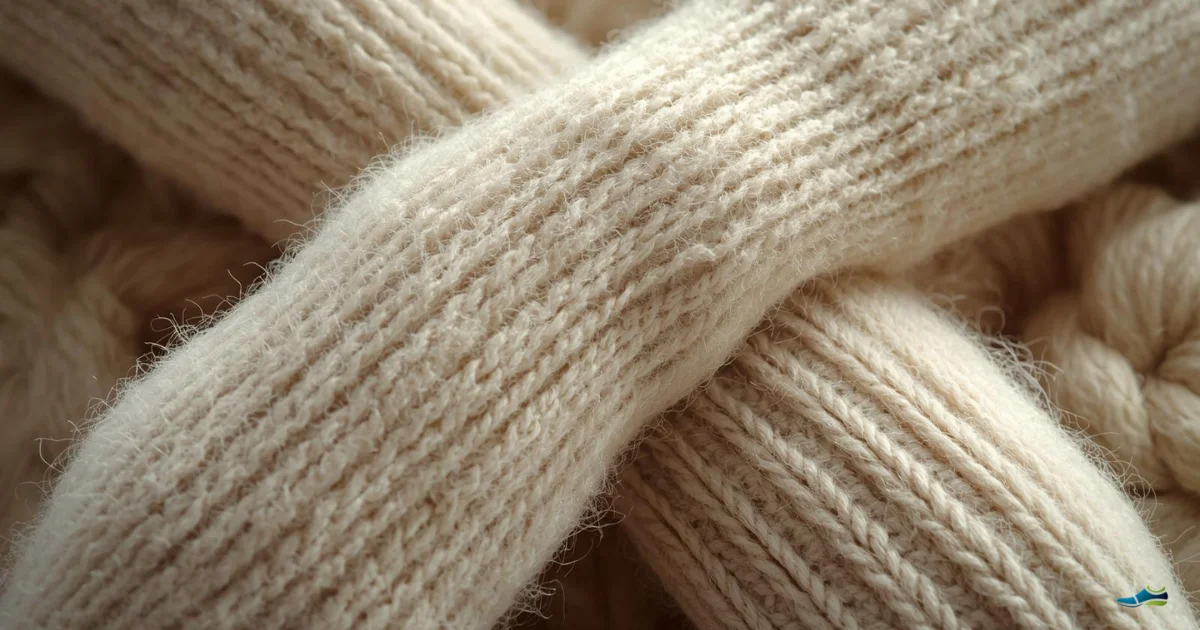Let’s get this out of the way — thick socks don’t always mean warm feet. If your toes have gone clammy in boots or your ankles puff up like risen dough, you’ve met the enemy: the wool monster.
We’ve all done it — stuffing thick socks into shoes that weren’t built for them, then wondering why feet feel hot, tight, or weirdly… cold. Here’s the shocker: it’s not thickness that keeps warmth in — it’s airflow and moisture control.
The best thin socks for winter aren’t just lighter; they manage heat, moisture, and movement far better than bulky wool ever could.
📌 At a Glance
- ✔️ Thin doesn’t mean cold — breathability beats bulk.
- ✔️ Look for thermal-rated lightweight blends (merino, bamboo, microfibre).
- ✔️ Moisture-wicking fibres stop sweat from turning icy inside boots.
- ✔️ A roomy-fit shoe keeps circulation flowing — tight equals chill.
If you’re unsure which styles actually work for wider feet, head to Hosiery for Wide Feet: The Complete Comfort Guide. It breaks down materials and fits that really move with your foot.
Why Thick Socks Aren’t Always the Answer
There’s a strange logic people apply to winter footwear: “If I double up on socks, I’ll double the warmth.” Wrong. What you’re really doubling is compression, sweat and restricted circulation.
Thick socks can push your feet against the inside of your boots, cutting off blood flow and trapping moisture. That’s why they often start out toasty and end up freezing. Warmth comes from dry insulation, not damp fabric.
If you’re still convinced thicker means warmer, try swapping them for lightweight winter socks — your feet might just breathe a sigh of relief.
The Science Behind Warmth (It’s About Breath, Not Bulk)
Your body keeps warm by circulating heat. When socks are too thick, the air pockets that regulate temperature get squashed flat. You end up with a tight layer of soggy fabric instead of a soft barrier of warmth.
Thin socks with high-quality fibres — merino wool, bamboo or microfibre — manage moisture and maintain airflow while holding heat where it’s needed most. Think thermal control, not thermal overload.
If your feet swell, read Best Socks for Swollen Feet (Oedema) — gentle hold and breathable materials keep circulation healthy, and the same principle applies to winter comfort.
How Thin Socks Help in Cold Weather
It sounds backwards, but thinner socks often keep feet warmer for longer. Here’s why:
- Better circulation: more room = warm blood flow, not numb toes.
- Moisture control: wicks sweat before it cools on skin.
- More room for air: airflow = insulation; your shoes do the warming.
- Less friction: no bunching or rubbing — just smooth, dry comfort.
Thin doesn’t mean flimsy. The right blend can be light, warm and even cushioned where it matters most. Look for reinforced toes and heels — especially if you’re in and out of boots all day.
Fabrics That Keep You Warm Without the Bulk
Here’s the cheat sheet for winter sock fabrics that actually work:
- Merino wool: natural, breathable warmth; regulates temperature and odour.
- Bamboo: silky-soft, hypoallergenic and moisture-wicking.
- Microfibre blends: light but thermal; great in wide-fit boots.
- Cotton with stretch: fine for mild days, not ideal for heavy sweat.
Whatever you do, ditch acrylic-only socks — they trap sweat and heat unevenly, leaving feet clammy and cold.
Pairing Thin Socks with the Right Shoes
Even the best socks can’t save you from badly fitted boots. Make sure there’s enough space around the toes and instep to avoid pressure build-up. Wide-fit winter shoes give thin socks room to do their job — letting air circulate instead of crushing your feet into submission.
If you’re often on your feet, see Best Socks for Standing All Day for options that balance softness, support and airflow — perfect if winter shifts leave you aching and tired.
Not sure if your socks are too tight in your boots? Measure your foot width at home and check if your winter pair is cutting off circulation rather than keeping warmth in.
When to Go Thick (and When Not To)
Yes, there are times when a thicker sock makes sense — hiking in frost, outdoor work or long, static days. But even then, choose a technical thermal sock, not a chunky novelty knit. Anything that cuts blood flow or holds dampness will work against you. For everyday wear, thinner is smarter.
Bottom Line: Beat the Wool Monster
Stop stuffing your boots with fluff. Modern thin socks are engineered for warmth, breathability and circulation — all the things thick socks forgot about.
Beat the wool monster. Let your feet breathe, and they’ll thank you all winter.
FAQs
Q: Do thin socks really keep your feet warm in winter?
A: Yes — if they’re made from the right fibres like merino or bamboo. Breathable, moisture-wicking fabrics prevent sweat build-up; that’s what actually keeps feet warm and dry.
Q: Are thin socks good for wide feet?
A: Absolutely. They reduce bulk inside wide-fit shoes, keeping circulation open and comfort levels high.
Q: Should I double up on thin socks?
A: No need. Doubling layers just adds friction and traps sweat. One good pair of thermally efficient socks will outperform two basic ones.
Q: What’s the best thin sock material for winter?
A: Merino wool and bamboo are top choices — lightweight but thermally smart, breathable and odour-resistant.
Related Reads
1️⃣ Hosiery for Wide Feet: The Complete Comfort Guide
2️⃣ Best Thin Socks for Wide Feet
3️⃣ Comfortable Shoes to wear after Surgery
4️⃣ Best Socks & Tights for Swollen Feet (Oedema)
Disclaimer: Sue is not a clinician. Her posts reflect personal experience and research. Always follow your clinician’s advice for diagnosis or treatment.

